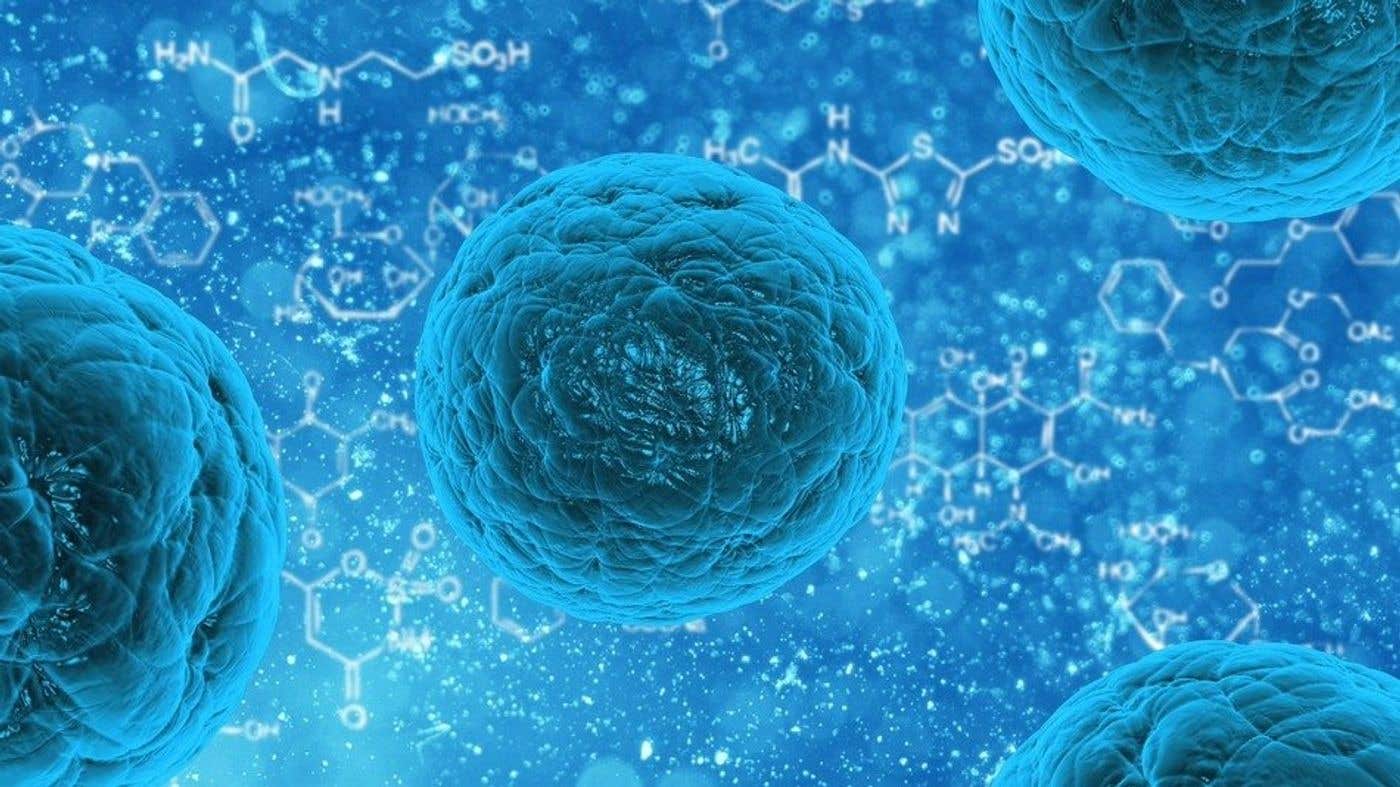“Origin-of-life” molecule could be the key to destroying cancer cells
Study indicates that RNA, the molecule that is responsible for the origin of life, plays a vital role in the functioning of living cells.

[May 30, 2023: Staff Writer, The Brighter Side of News]
RNA, the molecule that gave rise to life, has been shown to be essential for repairing human genetic material. (CREDIT: Creative Commons)
Recent research from the University of Seville indicates that RNA, the molecule that is responsible for the origin of life, plays a vital role in the functioning of living cells. This new study suggests that RNA may be the key to developing customized strategies for treating cancer.
The study was led by Daniel Gómez Cabello, a specialist in DNA damage and repair, and his team at the Biomedical Institute of Seville and the University of Seville. The research reveals that RNA is essential for repairing human genetic material and preventing mutations that can lead to cancer. The RNA polymerase enzyme, responsible for producing RNA in cells, is particularly crucial for healthy cells and is required in larger quantities by tumor cells to grow uncontrollably.
The prestigious journal Nature Communications recently published a study indicating that suppressing RNA synthesis using the THZ1 compound and similar substances after treatments that cause DNA breakages (such as radiation therapy) significantly enhances tumor cells' susceptibility to death. This discovery may have substantial implications for cancer treatment since it suggests that targeting RNA production might be an effective therapeutic approach.
Daniel Gómez-Cabello, the Principal Investigator, explained that this study provides insight into how to enhance conventional therapies and achieve a higher treatment success rate. Although RNA polymerase inhibitors cannot yet be employed in the clinical setting, clinical trials are presently being conducted on this enzyme for cancer treatment.
Related Stories
The discovery made by the researchers has the potential to pave the way for the creation of highly effective cancer treatments that target only the tumor cells, without damaging healthy cells. Although RNA-targeted therapies still require extensive research before they can be implemented in clinical settings, the research team is hopeful about the prospects of their findings.
Diana Aguilar-Morante, the co-author of the study, stated that "enhancing our understanding of how to use these compounds in a more personalized and safer way will enable us to offer the best possible treatment for cancer."
The Road to RNA-Based Cancer Therapies
Researchers have been investigating the potential of using RNA-based therapies to treat cancer for several years. However, the technology required to develop these therapies was not advanced enough until recently. Despite this, the idea of using RNA-targeted therapies has been prevalent.
DNA resection (ssDNA) correlates with nascent RNA synthesis. (CREDIT: Nature Communications)
Recent advances in genomics and biotechnology have now allowed scientists to design RNA molecules that can specifically target genes and pathways in tumor cells. As a result, this has created a new pathway for cancer research, which could lead to the development of personalized treatments that are highly targeted and less toxic than current therapies. This innovative approach has the potential to be more effective in treating cancer than traditional methods.
Gómez Cabello and his team have made a significant breakthrough in the field of cancer treatment. Their research demonstrates that blocking RNA synthesis can enhance the susceptibility of tumor cells to radiation therapy. This proof of concept provides a valuable insight into the potential of using RNA-targeted therapies for cancer treatment.
Nascent RNAs colocalize with DNA resection tracts in irradiated HeLa cells. (CREDIT: Nature Communications)
Nevertheless, the development of RNA-based cancer therapies is a complex and arduous process. There are numerous obstacles to overcome before these therapies can be implemented. One major hurdle is identifying safe methods to deliver RNA molecules to tumor cells without harming healthy cells.
Enhancing the effectiveness of RNA production inhibitors and minimizing the negative effects that cancer patients may encounter poses a significant challenge. Accomplishing this goal necessitates additional research, development, and comprehensive evaluation in both preclinical and clinical trials.
Inhibition of RNAPII impairs DDR protein recruitment to DSBs. Representative time-lapse images of CtIP-GFP recruitment to DNA damage in RNAPII -inhibited (THZ1, 1 µM during 2 h) and DMSO as control during 600 s post microlaser irradiation in U2OS cells. n = 3 biologically independent experiments. (CREDIT: Nature Communications)
Nonetheless, scientists maintain a positive outlook on the potential of RNA-targeted therapies for cancer. Consistent exploration and investment in this field could potentially bring about a cancer treatment revolution, harnessing the potency of RNA.
Collaboration and Funding
The use of advanced technology and a multidisciplinary approach by the Biomedical Institute of Seville, the University of Seville, and the Danish Cancer Society has played a significant role in the progress made in the study of the role of RNA in repairing human genetic material and preventing cancer mutations. Collaborative efforts between these organizations have been a crucial factor in the success of this research.
Diana Aguilar-Morante, a co-author of the study, has emphasized the importance of collaboration in advancing cancer research. She believes that combining resources and working together can speed up progress significantly. Collaborative efforts have indeed been instrumental in the research's success.
Apart from collaboration, funding has also been critical in enabling the researchers to make progress. The project has received financial support from the Government of Andalusia and the Spanish Association against Cancer (AECC), which has allowed the researchers to continue their work and advance the project further.
Since its inception in 1953, the AECC has been a significant contributor to cancer research in Spain. The organization, which is dedicated to fighting cancer, has invested over 2.5 billion euros in cancer research, making it the largest private funder of cancer research in the country. The AECC is proud to support this crucial research, which has the potential to make a significant impact in the field.
A spokesperson for the AECC expressed their support for the research and their mission to fund research that leads to better outcomes for cancer patients. The organization recognizes the importance of this project and the potential it holds to advance our understanding of cancer and its treatments.
The Cancer research in Andalusia has been boosted by the strong support from the Andalusian government. The government has provided funding and resources to the Biomedical Institute of Seville and other research institutions to facilitate their cancer research activities.
Apart from the government's contributions, other institutions such as the European Union and the Spanish National Research Council (CSIC) have also supported the researchers in their cancer research initiatives.
The Biomedical Institute of Seville and the University of Seville researchers are committed to continuing their cancer research projects, with a primary focus on glioblastoma and paediatric neuroblastoma. The research aims to enhance the effectiveness of RNA production inhibitors while reducing the adverse effects of cancer treatments to improve cancer patients' outcomes.
Note: Materials provided above by The Brighter Side of News. Content may be edited for style and length.
Like these kind of feel good stories? Get the Brighter Side of News' newsletter.
Joseph Shavit
Head Science News Writer | Communicating Innovation & Discovery
Based in Los Angeles, Joseph Shavit is an accomplished science journalist, head science news writer and co-founder at The Brighter Side of News, where he translates cutting-edge discoveries into compelling stories for a broad audience. With a strong background spanning science, business, product management, media leadership, and entrepreneurship, Joseph brings a unique perspective to science communication. His expertise allows him to uncover the intersection of technological advancements and market potential, shedding light on how groundbreaking research evolves into transformative products and industries.



